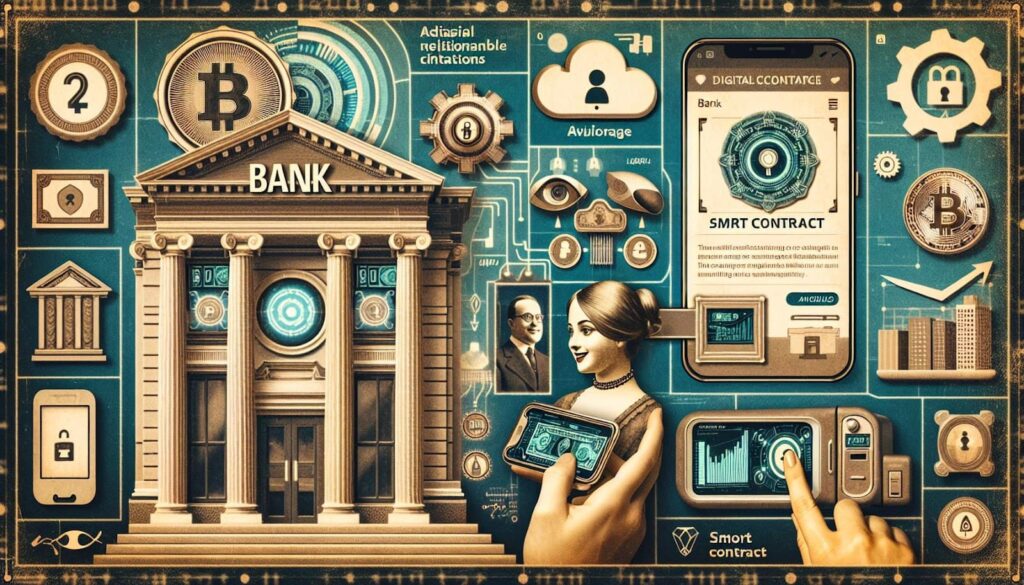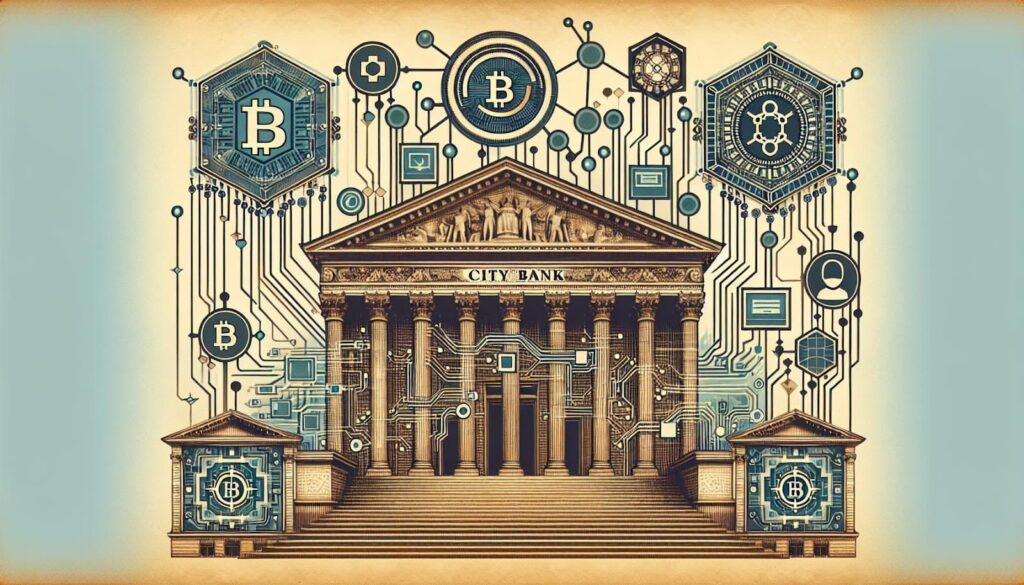Imagine a world where your banking experience is not only secure but also incredibly efficient. That’s the promise of combining artificial intelligence (AI) and blockchain technology. These two powerful tools are revolutionizing the financial sector, making transactions faster, safer, and more transparent.
AI enhances decision-making, fraud detection, and customer service by analyzing vast amounts of data in real-time. Meanwhile, blockchain ensures that every transaction is transparent and tamper-proof, providing an unparalleled level of security. Together, they create a synergy that can transform traditional banking into a seamless digital experience. Ready to explore how you can leverage these technologies in your banking operations? Let’s dive in.
Understanding AI and Blockchain
Artificial intelligence (AI) and blockchain technology have become pivotal in transforming banking operations. Together, these technologies offer enhanced efficiency, security, and accuracy.
What is Artificial Intelligence?
Artificial intelligence (AI) involves creating systems that can perform tasks requiring human intelligence. AI uses algorithms and machine learning to analyze data, make decisions, and predict outcomes. In banking, AI helps with fraud detection by analyzing patterns and unusual transactions. AI also improves customer service through chatbots and personalized recommendations.
What is Blockchain?
Blockchain is a decentralized digital ledger that records transactions across multiple computers. It ensures data integrity by making entries immutable and transparent. In banking, blockchain secures transactions and reduces fraud by providing a tamper-proof record. It enables smart contracts, automating processes and reducing middlemen.
Advantages of AI and Blockchain in Banking

Combining AI and blockchain offers transformative benefits for the banking sector. These technologies enhance security, efficiency, and customer experience.
Enhanced Security
AI and blockchain significantly boost banking security. AI detects fraudulent activities by analyzing behavioral patterns in real-time. Using machine learning, it recognizes anomalies, minimizing potential risks. Blockchain, being a decentralized ledger, ensures data integrity. Each transaction encrypted and linked to previous ones creates an immutable record. Together, these technologies reduce the likelihood of breaches and fraud.
Improved Efficiency
AI streamlines banking operations, reducing manual tasks. It automates processes like loan approvals by analyzing credit scores and financial history swiftly. AI-powered bots handle routine customer inquiries, freeing up human resources for complex tasks. Blockchain facilitates smart contracts, automating transaction verifications and settlements. These self-executing contracts cut intermediaries, speeding up processes and lowering costs.
Better Customer Experience
AI personalizes customer interactions, enhancing satisfaction. AI-driven chatbots offer 24/7 support, resolving inquiries promptly. They provide tailored financial advice, using data-driven insights. Blockchain ensures transaction transparency, building customer trust. Information on blockchain is easily accessible, allowing customers to track transactions in real-time. This transparency, combined with AI’s personalized approach, creates a superior banking experience.
Synergies Between AI and Blockchain

AI and blockchain complement each other well in the banking sector. Their combined use drives significant enhancements in security, transparency, and operational efficiency.
Enhancing Security Measures
AI and blockchain together strengthen security. AI can continuously monitor transaction patterns, identifying anomalies that might indicate fraud. Blockchain’s immutable ledger ensures data cannot be altered, providing an additional security layer.
Improving Transparency
Blockchain inherently provides transparency through its decentralized ledger. Each transaction is visible to all authorized parties. When AI analyzes this data, it can generate real-time insights, making banking activities more understandable and traceable.
Boosting Operational Efficiency
Integrating AI with blockchain boosts efficiency in banking operations. AI automates repetitive tasks like loan approvals, reducing processing time. Blockchain’s smart contracts streamline transactions, eliminating the need for intermediaries and further accelerating processes.
Real-World Applications in Banking

Combining AI and blockchain brings numerous real-world applications to the banking industry, improving security, efficiency, and customer service.
Fraud Detection
AI identifies fraudulent activities by analyzing transaction patterns in real-time, flagging anomalies for further inspection. Blockchain adds an immutable ledger, ensuring transaction records are tamper-proof, making fraud detection more robust. For example, Visa and Mastercard employ AI to monitor and analyze transaction data, while blockchain’s transparency mitigates fraudulent alterations.
Cross-Border Payments
Cross-border payments benefit from AI’s predictive analytics and blockchain’s decentralized ledger. AI predicts optimal routes and times for transactions, reducing fees and processing times. Blockchain offers transparency and security, ensuring each transaction is validated and immutable. Ripple, for instance, uses blockchain to facilitate real-time, low-cost international transactions, providing benefits like lower fees and faster processing times.
Automated Trading and Investment
AI-driven algorithms make stock trading and investment decisions based on vast data, optimizing returns. Blockchain ensures transparent, auditable transaction logs, fostering trust among investors. Wealthfront uses AI for portfolio management, while blockchain technology like Ethereum’s smart contracts automates investment processes, reducing the need for intermediaries and ensuring secure, transparent transactions.
Challenges and Considerations
Implementing AI and blockchain in banking presents several challenges. It’s essential to address regulatory, technological, and operational aspects to ensure a smooth transition.
Regulatory Compliance
Navigating regulatory compliance is crucial in banking. Regulatory bodies, such as the SEC and FinCEN, establish requirements to prevent fraud, money laundering, and other financial crimes. You need to ensure that AI algorithms and blockchain protocols adhere to these regulations. For instance, the European Union’s GDPR imposes strict rules on data handling and privacy, which can complicate AI-driven customer analytics. Working closely with compliance teams and regulators helps mitigate these challenges.
Integration Complexities
Integration of AI and blockchain into existing banking infrastructure poses significant difficulties. Traditional banking systems, often based on legacy technology, may not seamlessly align with AI’s computational requirements or blockchain’s decentralized nature. You might face compatibility issues and require substantial modifications to current systems. Collaborating with technology partners and conducting thorough system audits is necessary to smooth out integration processes.
Scalability and Performance
Balancing scalability and performance is a critical consideration. Blockchain networks can suffer from latency and throughput issues, especially during high transaction volumes. Similarly, AI’s demand for real-time data processing can strain system resources. Ensuring the performance of these technologies necessitates robust infrastructure and regular system optimizations. Employing scalable solutions and predictive maintenance can help maintain optimal performance levels.
Meeting these challenges head-on is vital to successfully harness the potential of AI and blockchain in banking.
The Future of Banking with AI and Blockchain
AI and blockchain are set to revolutionize the banking sector further. These technologies offer new ways to create more secure, efficient, and transparent banking experiences.
Emerging Trends
Significant trends are shaping the future of banking with AI and blockchain:
- Automated Customer Service: Banks use AI-powered chatbots to handle customer queries, reducing wait times and improving satisfaction.
- Predictive Analytics: AI analyzes customer data to offer personalized financial advice, enhancing user experience.
- Regulatory Compliance: Blockchain ensures compliance by providing an immutable record of transactions, which simplifies audits and reduces fraud.
- Decentralized Finance (DeFi): This trend leverages blockchain to create financial products without intermediaries, offering lower costs and increased accessibility.
Potential for Innovation and Disruption
Combining AI and blockchain opens up avenues for significant innovation and disruption in banking:
- Enhanced Fraud Detection: AI identifies unusual transaction patterns, while blockchain ensures data accuracy, effectively minimizing fraud cases.
- Smart Contracts: These blockchain-based contracts automate and enforce terms, reducing the need for intermediaries and speeding up transactions.
- Peer-to-Peer Lending: AI-driven credit scoring models and blockchain’s transparent ledger facilitate secure and efficient peer-to-peer lending platforms.
- Digital Identity Verification: AI and blockchain streamline identity verification processes by offering secure, tamper-proof methods of managing personal data.
Preparing for the Future
To harness these technologies, banks should:
- Invest in Technology: Allocate resources to develop and integrate AI and blockchain solutions, ensuring robust infrastructure to support these technologies.
- Enhance Cybersecurity: Strengthen cybersecurity measures to protect against new threats emerging from increased digitalization.
- Collaborate with Tech Partners: Work with technology experts to integrate new systems while ensuring compliance with existing regulations.
- Train Staff: Provide staff training on AI and blockchain applications to ensure smooth adoption and efficient use of these technologies.
These steps enable banks to leverage AI and blockchain, fostering innovation and ensuring a competitive edge in the evolving financial landscape.
Conclusion
Embracing AI and blockchain in banking isn’t just about staying current—it’s about leading the future. By leveraging AI’s real-time data analysis and blockchain’s secure transaction records, you’re setting the stage for a safer, more efficient banking experience. These technologies don’t just improve operations; they revolutionize them, offering unparalleled security, transparency, and customer satisfaction.
As you navigate this transformative journey, remember that collaboration with tech partners and investment in robust infrastructure are key. Stay ahead by continuously exploring new applications and innovations. The future of banking is here, and with AI and blockchain, you’re well-equipped to seize its full potential.